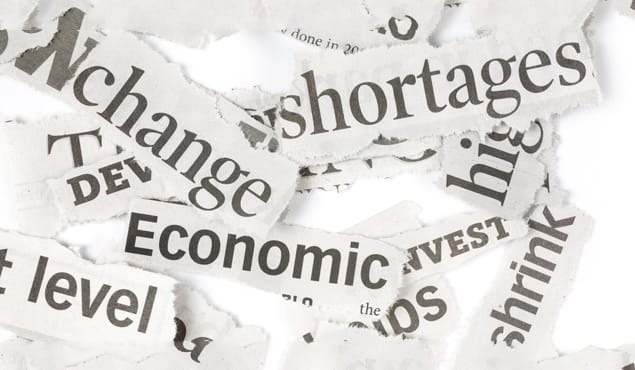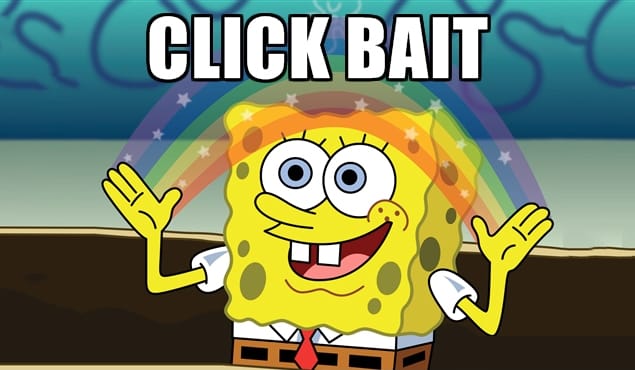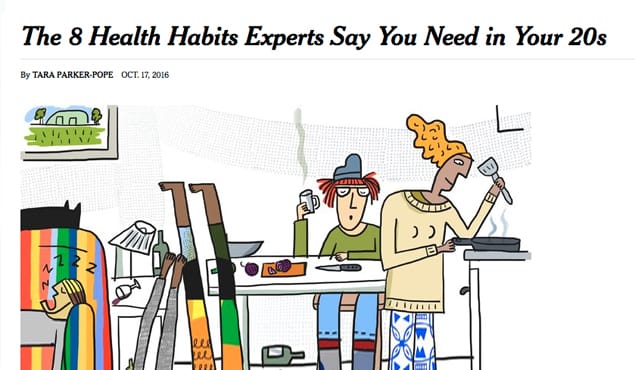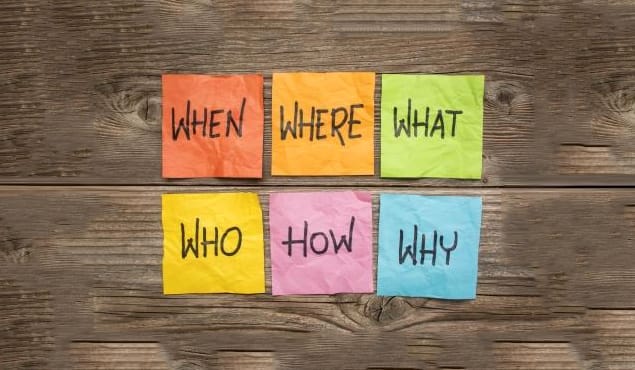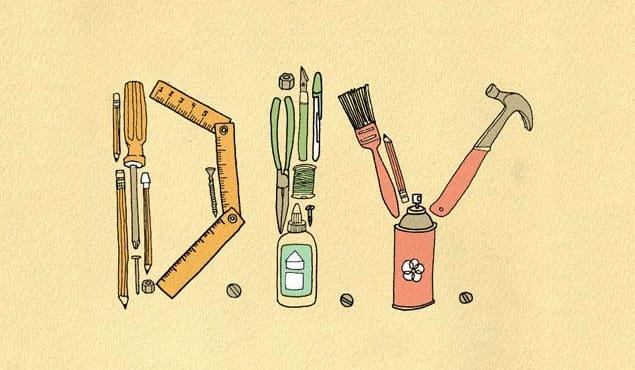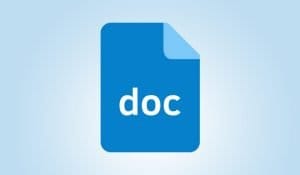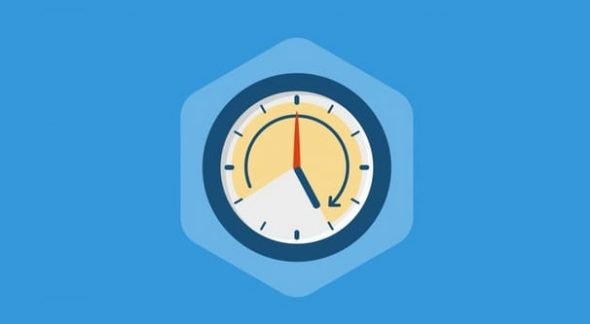The catchy headline in modern journalism is running rampant. Incredibly calculated words draw you, the reader, into a post you might have never even considered. It happens all the time, right?
One moment I’m perusing my Facebook feed, the next I’m learning about the habits of likable people (I’m likable, I bet on I’m this list), or about books that could save your life (I read, maybe my life has been saved), or the election, or marijuana usage, or why dogs are just so darn cute.
A catchy headline is worth more than the thousand-plus words you penned beneath said headline because if it wasn’t a big fat human lure of a headline you would never get any readers.
Respect Your Readers
You can maybe catch my semi-enraged tone. Yes, it exists. Mostly it’s because I see headlines as an issue, a fight to be fought, in the mind and time colonizing age of the internet.
In my opinion there are way too many terrible headlines out there. Headlines that are purposefully truncated to make you read more. Headlines that leave giant holes in their concept so that the reader has to click through just to find out.
As such there’s a bit of a hypocritical premise to this article, which is about how you can write headlines that draw people in. Except it doesn’t have to be hypocritical, because I still firmly believe that the best headlines, those that are catchier than others, don’t resort to these terrible tactics.
The best headlines are those that entice readers while also giving them the full picture. We don’t want to get the entire gist of the article from the headline, we want to be intrigued, and understand what we’re clicking.
The styles of headlines I’ll outline below fall under this category, and, from my perspective, always should.
However, there are many people on this planet, most of whom have their own idiosyncrasies when it comes to reading articles. Some of them love fear monger titles like “The Woman Who Killer Her Daughter Did It For—You Guessed It, Click to Find Out”. To some, that’s a big bucket of chum thrown on the face of Jaws.
While I don’t personally like them, or think they’re editorially sound, you could probably convince somebody they’re worth it. I’m going to stick to the authenticity bent, but wanted to be inclusive in case you, reader, are Jaws.
Let’s dice up these manicured words and figure out why they’re so powerful, and why they elicit the click.
Listicles
The headline to this very article is a good place to start. Why did you click on this article? Because it promised to give you a precise number of catchy headlines and blog post titles, right?
The listicle is probably the most common (and sometimes overused) catchy headline scheme on the planet right now. The New York Times didn’t used to publish listicles — “7 Reasons the U.S. Should End McCarthyism” wouldn’t have flown back in the ’50’s — but they do now.
It’s a sign of the times. The reasons for why listicles work delves into the human psyche — the short of it is that people love numbers, and find that numbers are a compelling way to digest information.
Some examples:
1. 26 Seriously Useful Baking Tips You’ll Wish You Knew About Sooner
Penned by the listicle master itself, Buzzfeed knows how to turn you into a click machine. It uses a number, an adverb, and a time frame. For any baker who has struggled, might struggle, or thinks they don’t ever struggle, it’s a click-worthy post.
2. 14 Habits of Exceptionally Likable People
Trending on Medium (when I wrote this), it speaks to all of us. Because we all think we’re likable. Again you see an adverb, a number, and a relationship you.
3. The 7 Harmless Habits That May Cause Cancer
Here there’s a number, the word “habits” again, and a massive topic. We all want to avoid cancer, and we all have harmless habits.
Also, the “May” of the situation speaks to the authenticity approach. The author isn’t 100% positive, because science can’t be 100% positive. It might be a more-clicked article without the “May” — wouldn’t you click “The 7 Harmless Habits That Cause Cancer” in a heartbeat? I mean, really.
But you have to be honest with your reader.
Answering a Question
Another super common, incredibly click-worthy style of headline is answering a question. Using How, Why, What, Where, and Who is an amazing way to open a potential reader’s mind to the possibility.
This works because it raises the very question you’ve written about for the reader. If the article is “What Are the Best Ways to Cook Pancakes?”, you have invoked the pancake for the reader, and the ratios of flour to milk, and what kind of pan to use. It gets them thinking that maybe they have their own reasons, which they want to compare to your own.
It also claims to provide an answer. This, more than anything, is why people will click these. If you don’t explain the best ways to cook pancakes, they will feel cheated.
Question articles are powerful in nature because they strive to answer a question, which is the basic block of providing information.
Some examples:
4. How to Become a World-Class Copywriter in One Month or Less
This addresses a very specific profession, and puts it in a timed context. It doesn’t just tell you how to be a copywriter, but how to be a “world-class” copywriter. This extra addition implies you have the ability to do it, which readers want to hear.
Then, there’s the “one month or less”. While I think this is a good headline, it’s also toying with the line of authenticity. I’m guessing any world-class copywriter would argue it can’t be done in a month. However, the article headline doesn’t imply how hard it could be, so it does make you want to click.
5. How the Web Became Unreadable
This is much more straightforward, and relies on an interesting topic. You may read this headline and think, “Wow, things are hard to read online, you’r right!” and click because you had never quite thought about it before.
Or, you’ll click because you are into web readability.
6. What % Wednesday Adams Are You
Buzzfeed strikes again with a completely nonsensical, highly trending question article. This question offers a percentage, which means you’ll end up with a specific percentage, which implies it’s a quiz. The headline works because it doesn’t have to say all that, but rather gets it across with a hip “%”.
The article doesn’t matter — not at all — but people will click because of the escape implied, and the personal relationship to Wednesday Adams.
A New Study
One of the best ways to get clicks is to have something really unique to say. That’s always been true, and always will be true. It’s why Op-Eds are so popular, and why society praises scientific discovery over so much else.
If you have the resources to actually conduct a study on a topic in your field of great interest or debate, do so. The hits you get just from having relevant information will be huge, no matter what the headline is.
With that said, the headline still plays a huge part. You have to show you studied something, you have to show why it’s unique, and you have to both hint at the conclusion and leave it somewhat open for readers to be fully intrigued.
If the study’s conclusion is definitive, and you are definitive in the title, it might not be as effective.
Some examples:
7. Patagonia’s New Study Finds Fleece Jackets Are a Serious Pollutant
In the above case, it’s not a study conducted by Outside Magazine itself, but by an outdoor brand, Patagonia. You can see the word study in the headline, a brand that carries weight, and the results.
This is a decent headline, but it also tells you everything you need to know right up front. The results (for the outdoor world) are meaningful, so people will click through. However, many will read the headline, move on, and tell their friends, “Hey, did you hear fleece jackets are pollutants?”
It’s a fine line between authenticity with the reader and encouraging a click, and I think this headline could use a tad more verbiage to get people to read the whole article.
8. The Best Productivity Habits of Famous Writers
While not a strict study, this article collects quotes and concepts from famous writers to create interesting content that is informative to a specific profession. Unlike the Outdoor Magazine article, it doesn’t say anything about what those habits are, so it entices readers to click.
Inside you’ll find many critical elements of writing, craft, and process, which are akin to trial and error by luminaries in their field. This information can be seen as scientific (in a humanitarian sense), and piques people’s interest.
9. Statistics Show White Supremacy is a Bigger Threat to the U.S. Than Radical Muslims
I apologize for the potentially triggering topic, but this kind of analysis works best with real examples, and the best examples are those that talk about very real things.
The above headline uses the study format and lays out the results of the study in the entire headline. Just like the Outdoor Magazine example, a reader wouldn’t need more to know what the article is going to say.
However, the topic is on the pulse. It hits the 2016 election (which was happening when this article was written), racial issues, religious issues, and is predicated on the concept of demystification.
All of these things make people click, but they also make people get involved. It’s not easy to get headlines like this, but if you can, it will certainly drive traffic. Not to mention the beneficial social impact.
The How To
One of the most successful and easily clicked headlines around: the How To. How to Cook Curry, How to Build a Tiny House, How to Kill a Gopher — the list of how to articles is endless because people will always need to know how to do things.
How tos are successful by nature because they solve a problem for the reader. That means, typically, that if you’ve written a how to and can get it out there, it will perform decently.
However, making a How To article stand out from a crowd is more difficult. You’re not the only one that knows how to cook curry and write about it.
What comes in here, and in other headline styles, is the bombastic language you use and the authority you have.
Some examples:
10. How to Cook Delicious Curry
A simple how to gets across the message, and uses an adjective to peak people’s interest. However, it doesn’t offer much else, let alone what kind of curry.
11. How to Cook the Best Damn Curry of Your Life
This example brings in that authority and bombastic tone. It even curses, which I don’t typically recommend, but for food recipes it’s alright. The tone makes one smile, and if it’s coupled with a nice picture, it’ll get more clicks than the first one.
12. How to Cook Authentic Green Curry like a Thai
This final example is arguably the best. It actually includes the word “authentic” in it, therefore rooting itself authenticity. It also specifies the type of curry, and the nationality, which makes it more specific. If your audience was looking for Indian curry, they might travel elsewhere, but the fact that there are other positives (green and authentic) might even convince them to try this one.
Note that I made all of these up to show the gradation. I do, however, cook a mean green curry.
Don’t Put Baby in a Corner
What I mean by that, in terms of headlines, is that readers typically don’t want to be told exactly who they are, what they want, and what to believe. First, it’s very sketchy for a writer to take such a bold claim. It skews authenticity, because there’s no way you could be writing for everyone, yet your headline doesn’t change when a new person reads it.
If you tell a reader they “need” to perform five specific exercises before they can climb a mountain, they will be turned off.
If you tell them that there are five exercises that help when climbing a mountain, they will be intrigued.
This is most important when the stakes are high. As in, their livelihood, or their finances. If it’s whether or not they look like Wednesday Adams, you can be more direct. (Thanks Buzzfeed.)
Some examples:
This is hard to find specifically, because good examples don’t have it, and bad ones do. As such, I’ll create two unique headlines and show you both sides.
13. “Why You Need to Floss”
Yikes, right? I mean, we know flossing is important, that’s a societal truth. So, despite this being question based and somewhat compelling, it’s telling the reader what to do. What would be better?
14. “How Flossing Could Save Your Life”
This brings up the value of your existence, connecting dentistry to health, which is really the point of flossing. It frames it as a question, and doesn’t say you need to do anything, but implies that it’s important, therefore raising the stakes.
This concept — the baby in a corner, as I’m calling from now on — is very tricky. You’ll see articles all over the place that tell readers exactly what to do.
A lot of it depends on context, but as a general rule if you can frame the idea as a discussion readers will be more inclined to click, especially readers that are wavering on an issue.
That’s a Wrap
The headline game is a tricky one, but there are plenty of templates to try out. You can use a variety of the ones above alone or combined to create the ultimate headline of your dreams.
A couple parting thoughts:
- Stay within 70 characters. People don’t love long headlines, but they also don’t love really, really short ones. Find the happy medium
- Think about SEO. Search engine optimization is the other driving factor in a headline. First, make it great for a reader. Second, make sure it’s searchable in a way that makes sense.
- Be bold! Get creative, use power words, and invoke something in your readers. Emotion and interest lead to clicks, and will probably be more fun to come up with.
Now get out there and write a killer headline.
 ContentPowered.com
ContentPowered.com
